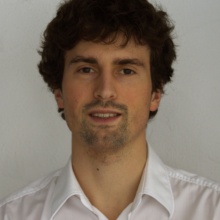Channel Coding: Spatially Coupled LDPC Codes and Polar Codes
Nowadays, block LDPC codes are widely used as forward error correction (FEC)
in several important standards such as the DVB-S2, the WiMAX and the IEEE 802.11n standard. LDPC
codes are usually decoded by the low-complexity belief-propagation algorithm (BP). In general this
decoder is very powerful and simple to construct for every arbitrary LDPC code. It allows to build
a soft-in/soft-out (SOSI) decoder with a highly parallel architecture. However, the practical codes
with respect to hardware complexity, number of decoding iterations and the finite-length
performance suffer from a gap between the BP performance and the maximum a posteriori (MAP)
performance, which results in a gap to the channel capacity.
Spatially coupled low-density parity-check (SC-LDPC) codes can achieve the
channel capacity under low-complexity belief propagation (BP) decoding, which means they reach the
MAP performance under low-complexity BP decoding. These codes usually show a very low error floor,
which makes them a promising candidate for modern communication standards. For practical finite
coupling lengths however, there is a non-negligible rate-loss because of termination effects.
In order to simulate such low error probabilities, we currently develop a simulation cluster
based on graphic cards (GPU) and the Nvidia CUDA programming language. This setup allows to
simulate an arbitrary LDPC code / polar code with bit error rates (BER) up to 10
-9 - 10
-
10 within a feasible period of time.
One goal of my research is to investigate and understand the effects of
spatial coupling and use this knowledge to design codes close to the capacity with very good
properties and a low decoding complexity.
Machine Learning for Communications
We revisit the idea of using deep neural networks for one-shot decoding of
random and structured codes, such as polar codes. Although it is
possible to achieve maximum a posteriori (MAP) bit error rate (BER)
performance for both code families and for short codeword lengths,
we observe that (i) structured codes are easier to
learn and (ii) the neural network is able to
generalize to codewords that it has never seen
during training for structured, but not for random codes. These
results provide some evidence that neural networks can learn a form of decoding algorithm,
rather than only a simple classifier.
Deep learning-based channel decoding is doomed by
the curse of dimensionality: for a short code of length N=100 and rate r= 0.5, 250
different codewords exist, which are far too many
to fully train any neural network (NN) in practice.
The only way that a NN can be trained for
practical blocklengths is, if it learns some form
of decoding algorithm which can infer the full codebook from training on a small fraction of
codewords. However, to be able to learn a decoding algorithm, the code itself must have some
structure which is based on a simple encoding rule, like in the case of convolutional or algebraic
codes. The goal of our work is to shed some light on the question whether structured codes are
easier to “learn” than random codes, and whether
a NN can decode codewords that it has never seen during training.
Always looking for Studentes interested in
- Channel Coding (LDPC codes, Polar codes)
- Machine learning/Deep Learning for Communications
- GPU Programming (C/C++ and CUDA)


